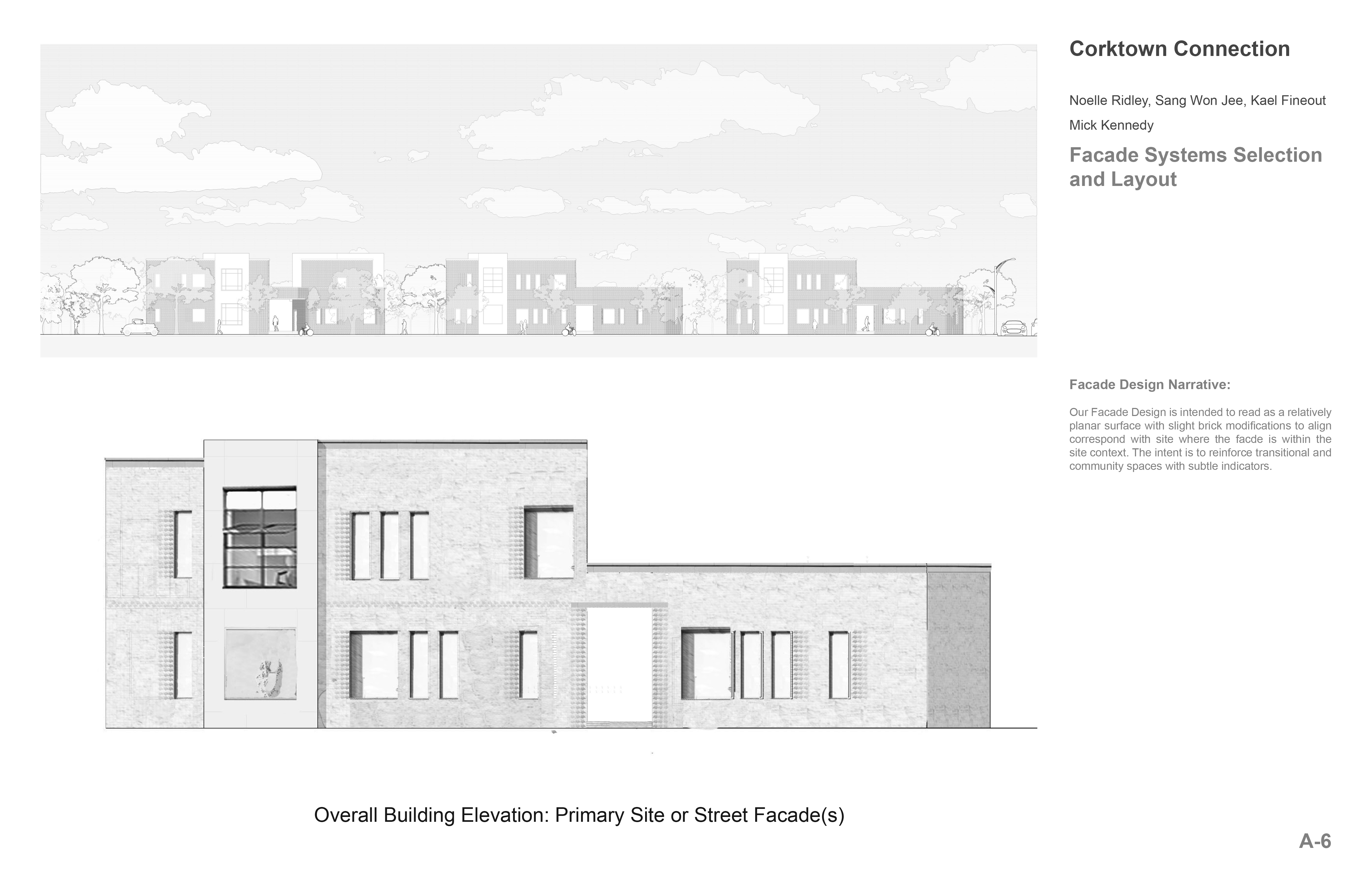PROFESSORS
MICK KENNEDY
STUDIO SECTION
COMING TOGETHER
The studio focussed on our return to the experience of our physical being. Our sensations of heat, light, dark, sound. The seasons. These are all particular to place. The activities of daily life shape spaces in response to the phenomena of place. Patterns of living in place form typologies that are specific to locale. Place is further defined by physical materials. Perception is exquisitely localvore.
Working on a site in Detroit's North Corktown neighborhood, student teams developed solutions for small scale housing clusters designed around courtyards and well integrated open spaces.
As a reflection of the theme of Coming Together, student teams explored new opportunities for Type III Construction, bringing together masonry and wood materials and construction processes in structure, details, thresholds and surfaces.
The goal of the housing was to provide equitable access to living in this burgeoning neighborhood for both new and former residents. The design and integration of accessory dwelling units was a key component of all studio projects.
Student projects reflect an understanding of the patterns of occupation and activity that shape rooms and the increments of rooms: doors, windows, thresholds. Their study of the patterns of daily life—sleeping, bathing, cooking, eating—that created places to call home. We will consider how these activities can bring us together to form community and the communal life that binds us together.
︎︎︎BACK ︎
ELLIE ABRONS + MEREDITH MILLER
Austin Ehrhardt, Elizabeth Greene, Ye Wang
Zoë Faylor, Rosa Manzo, Anne Redmond
CRAIG BORUM + CLAUDIA WIGGER
Chun-Li (Julie) Chen, Megan Clevenger, Amber Klinger
Yuanyuan Cui, Danielle Weitzman, Jasmine Wright
LARS GRÄBNER + CHRISTINA HANSEN
Kayla Hawley, Kunshi Liu
Renwei Liu, Lu Li, Elizabeth Sinawe, Yujia Wang
KIT MCCULLOUGH + MICK KENNEDY
Jie Feng, Yuxin Ma, Joy Zou
Noelle Ridley, Sang Won Jee, Kael Finehout
STUDENT WORK
Noelle Ridley,
Sang Won Jee,
Kael Finehout
“Corktown Connections”
Corktown Connections is a spatial exploration seeking to create a cinematic experience of domestic life through framed views and unexpected moments prompting move-ment through the project. Its goals include providing an en-gaging space for residents seeking long-term, family-frend-ly housing in Detroit, integrating of accessory dwelling units (ADU) and accessory office units (AOU) into the fabric of the design and strengthening public, transitional and com-munity spaces through a focus on thresholds, materials and details.



















